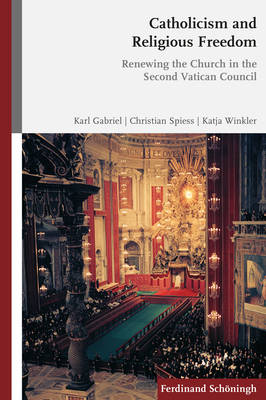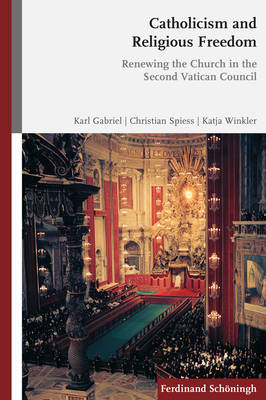
- Afhalen na 1 uur in een winkel met voorraad
- Gratis thuislevering in België vanaf € 30
- Ruim aanbod met 7 miljoen producten
- Afhalen na 1 uur in een winkel met voorraad
- Gratis thuislevering in België vanaf € 30
- Ruim aanbod met 7 miljoen producten
Zoeken
Catholicism and Religious Freedom
Renewing the Church in the Second Vatican Council
Karl Gabriel
Paperback | Engels
€ 176,45
+ 352 punten
Omschrijving
Just about fifty years ago, in its declaration on religious freedom at the Second Vatican Council, the Catholic Church programmatically dispensed with political coercion as a means of enforcing its claim to truth. This act of self-imposed restriction with regard to religious claims to truth is exceptional in the history of religions. It is still extremely difficult to explain even today how such a traditional institution as the Catholic Church could have altered its position so fundamentally. In this volume the authors dispute how the Church came to its position, what the reasons and motives were for its repositioning, what shape this process of change took, and the steps involved in the change: What were the characteristics, circumstances and dynamics of the path of Catholicism to recognizing religious freedom?
Specificaties
Betrokkenen
- Auteur(s):
- Uitgeverij:
Inhoud
- Aantal bladzijden:
- 305
- Taal:
- Engels
Eigenschappen
- Productcode (EAN):
- 9783506789006
- Verschijningsdatum:
- 30/11/2018
- Uitvoering:
- Paperback
- Formaat:
- Trade paperback (VS)
- Afmetingen:
- 155 mm x 234 mm
- Gewicht:
- 5248 g

Alleen bij Standaard Boekhandel
+ 352 punten op je klantenkaart van Standaard Boekhandel
Beoordelingen
We publiceren alleen reviews die voldoen aan de voorwaarden voor reviews. Bekijk onze voorwaarden voor reviews.











